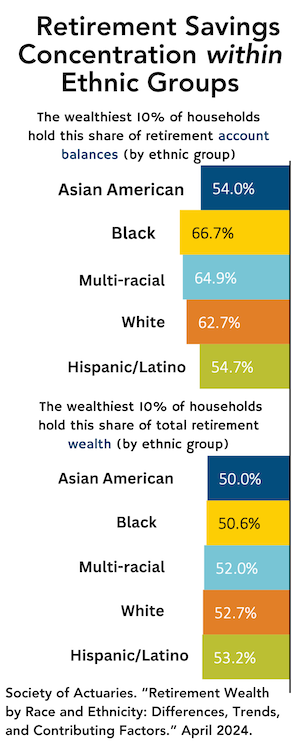
It was heartening to see more than 80 people listening in on the RIIA webinar on “Longevity Annuities and Income Flooring” yesterday, where Steve Shepherd of Hewitt EnnisKnupp and I presented our views on the institutional and retail markets (respectively) for qualified longevity annuity contracts, or QLACs.
The Treasury Department’s announcements on QLACs this year made it possible for retail investors and plan participants to buy deferred income annuities (DIAs) with income start dates after age 70½ (but before age 85) using qualified savings without running afoul of the rules on required minimum distributions from tax-deferred accounts.
Americans currently have about $13.8 trillion in qualified savings and retirees will face lots of longevity risk. Both factors bode well for the sale of both DIAs and QLACs. But QLACs, it should be pointed out, arguably make the most sense as the capstone of a long-term retirement income plan, not as a stand-alone income solution.

The Treasury Department limited QLAC premiums to the smaller of $125,000 or 25% of a person’s total qualified savings. A retiree simply can’t produce much monthly income from such a small premium unless he or she delays the income start date past age 80 or so.
Think of retirement income planning as akin to building a multi-stage rocket. You arguably need a large income for the “go-go” years from ages 65 to 70, perhaps a slightly smaller income for the slow-go years from ages 70 to 80, and a life-conditional income from age 80 onward, when your chances of being alive are lowest and the benefit of pooling mortality risk is greatest. The QLAC is designed for that third stage. Think of it as the manned capsule that carries your client into the Heavens.
As an advisor, if you present the QLAC in the context of a three-stage rocket (or some other bucketing-type metaphor), the client may able to see the logic of it. If they’re worried about dying before they recover their entire premium, you can steer them toward a QLAC with a return-of-premium benefit and/or a cash refund.
Many people with lots of qualified savings understand that they must reserve a certain amount of money to prepare for the chance that they might need income for the years beyond age 80. If you can demonstrate that using a long-dated QLAC is the cheapest way to hedge that specific risk, they might see the value in the product more easily.
Mindful not to turn the QLAC into a major tax loophole, the Treasury Department went about as far as it felt that it could in making the RMD rules more flexible for deferred income annuities purchased with pre-tax money. The burden is on financial advisors to show retirees the best way to take advantage of the new flexibility.
© 2014 RIJ Publishing LLC. All rights reserved.


